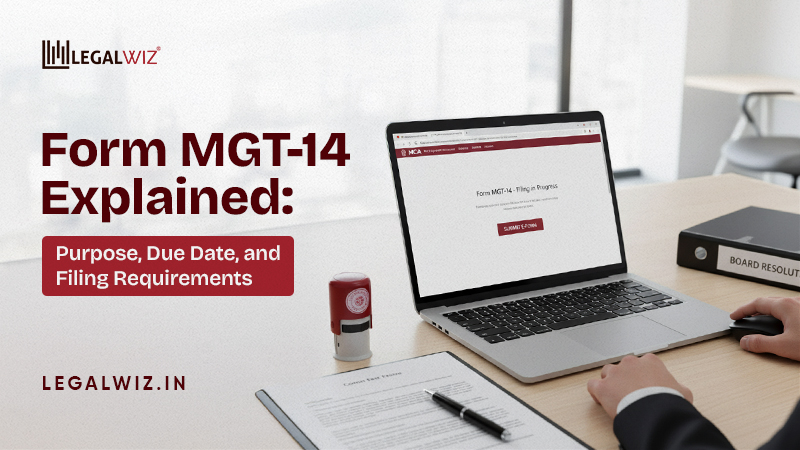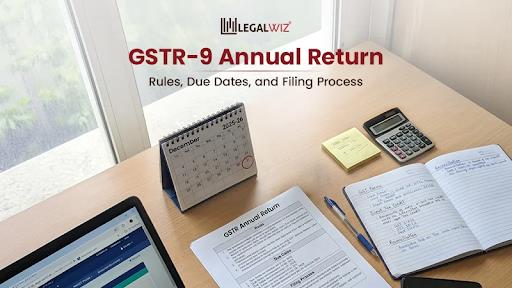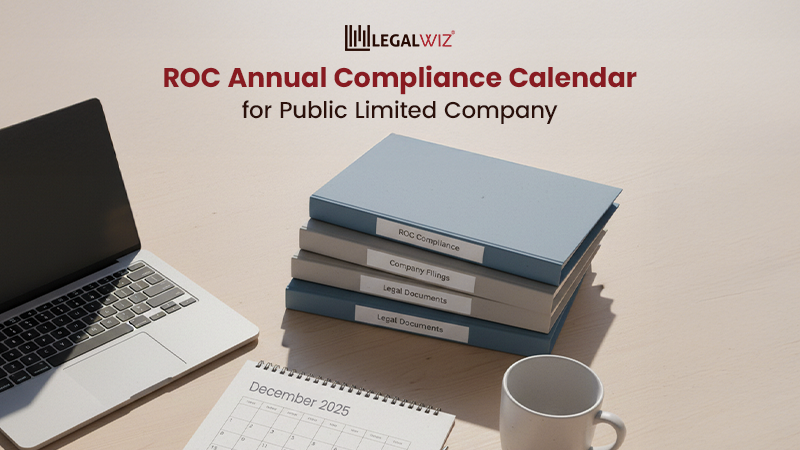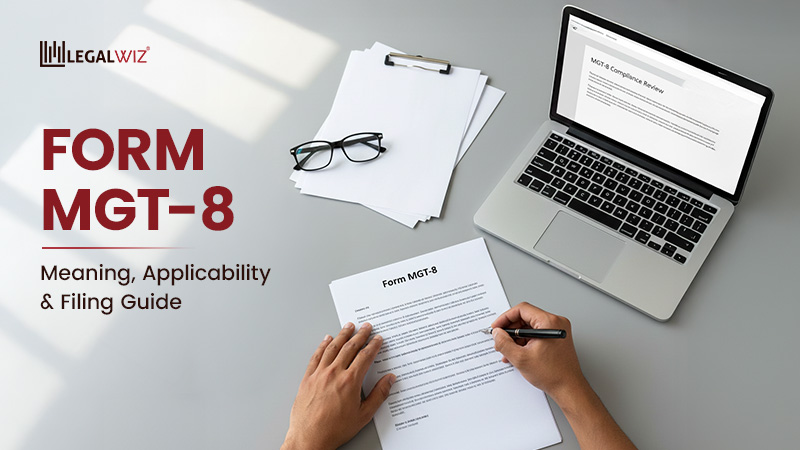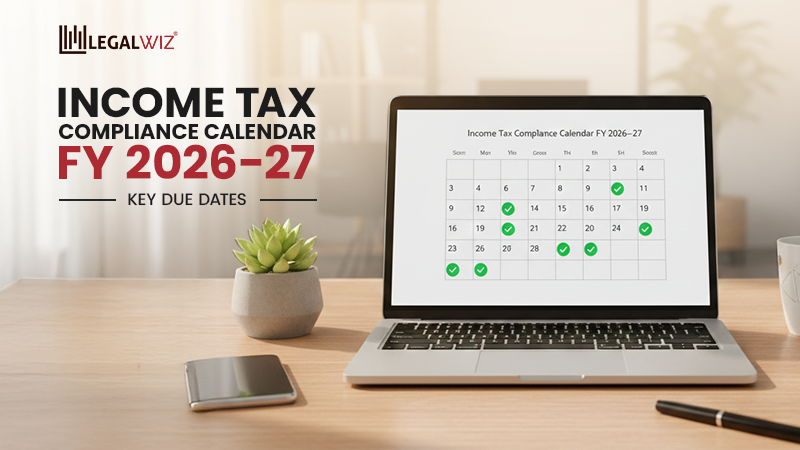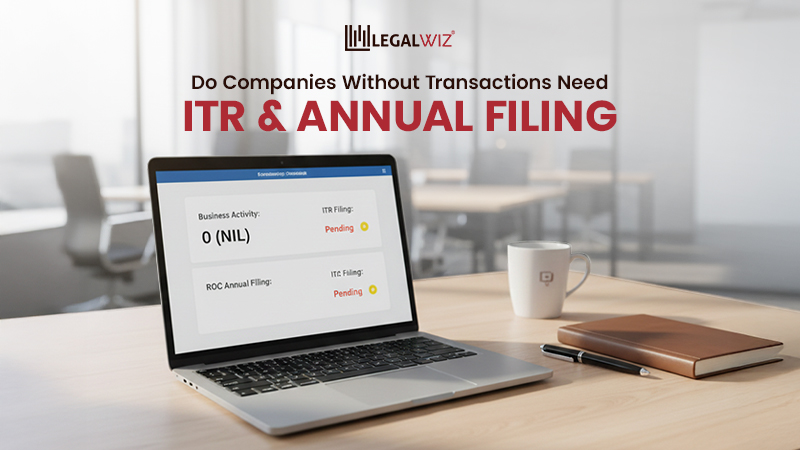Form MGT-14 Explained: Purpose, Due Date, and Filing Requirements
Running a business isn’t just about profit. It’s about trust, accountability, and legal transparency. You earn trust not only through actions but also by recording every major decision properly.
When you file annual compliance for a company, the MCA reviews your company’s activities for the year. For major events like mergers, share issues, or changes in the AOA, you must file immediately when they occur.
Form MGT-14 is very important here. It makes sure that these choices are recorded with the Registrar of Companies (ROC). This protects your business legally and gives shareholders and the government more faith in it.
This guide will explain Form MGT-14, its due date, and how to file it.
What is Form MGT-14?
Form MGT-14 is an e-form required under the Companies Act, 2013, which companies must file with the Registrar of Companies (ROC) to record certain resolutions and agreements passed by the Board of Directors or shareholders.
It ensures transparency and compliance by officially informing the ROC about key corporate decisions such as approving financial statements, altering the company’s name or capital, appointing auditors, or changing the Articles or Memorandum of Association.
Simply put, Form MGT-14 acts as proof of decisions taken at board or general meetings, helping maintain accurate public records of a company’s governance activities.
Why is MGT-14 Important?
In short, MGT-14 is vital because it makes it easier for people to see and hold corporations accountable. This document makes sure that all decisions that influence shareholders, stakeholders, and sometimes creditors are set down in an official form.
In short, the MGT 14 form is for:
- Keep shareholders and regulators in the loop
- Prevent disputes over what was decided
- Maintain credibility during audits, mergers, or investor scrutiny
Companies that meet this condition protect themselves from legal problems and show that they follow strong governance rules.
When is There a Need to File MGT-14?
Not every decision in a company requires filing MGT-14, but when a resolution impacts the company’s structure, finances, or ownership, it usually does. Common situations that call for filing include:
| When to File Form MGT-14 | Examples |
| When a decision changes company structure | Altering the Memorandum of Association (MOA) or Articles of Association (AOA) |
| When issuing or modifying company shares | Issuing new shares or sweat equity shares |
| When approving employee-related plans | Approving Employee Stock Option Plans (ESOPs) |
| When reorganizing business operations | Undertaking mergers, acquisitions, or corporate restructuring |
| When changing the company structure | Converting a Private Limited to a Public Limited company, or vice versa |
| When borrowing beyond limits | Borrowing exceeding paid-up capital and free reserves |
| When closing operations | Voluntary or tribunal-based winding up |
In short, if a decision causes a major change in the company’s structure, finances, or ownership, filing MGT-14 is mandatory.
Next, identify the type of resolution for each decision—Ordinary, Special, or Board—as MGT-14 requires proper classification before filing.
Types of Resolutions That Are Required For MGT-14
MGT-14 applies only to major corporate decisions, ensuring accountability and transparency in critical matters, not day-to-day discussions. That’s why it categorizes resolutions based on their importance, making it clear which decisions require filing.
1. Ordinary Resolutions
These are the everyday choices that don’t need a lot of agreement. More than half of the shareholders or board members must agree for them to pass.
For example, hiring an auditor or changing certain directors.
2. Special Resolutions
These are the significant choices that will have a big effect on the business. For them to pass, they require at least 75% of the board or shareholders to agree.
For example, changing the Articles of Association, agreeing to a merger, or giving out sweat equity shares.
3. Board Resolutions
Some decisions are handled specifically by the board and don’t require a general meeting. These usually involve company finances or strategic actions.
Example: Approving loans, issuing new securities, or adopting the company’s financial statements.
Each resolution type comes with its annexure (A, B, or C) depending on its nature.
Who Needs to File MGT-14?
Public Companies
- Must file both special resolutions and specific board resolutions listed under Section 179(3)
Private Companies
- Must file all special resolutions, but are exempt from filing most board resolutions under Section 179(3)
Basically, private companies have it a bit easier, but they can’t escape MGT-14 entirely.
MGT-14 Form Resolutions (Annexures)
Let’s take a look at a few resolutions covered under these annexures, just to have an idea of what could be included.
| Annexure | Type | Resolutions Covered |
| Annexure A | Board Resolutions | ○ Investments ○ Approving loans ○ Authorizing guarantees ○ Approving borrowings ○ Related party transactions ○ Financial statements ○ Mergers ○ Share buy-back ○ Appointing or reappointing Managing ○ Director (MD) |
| Annexure B | Special Resolutions | ○ Alteration of Memorandum or Articles of ○ Association (MOA/AOA) ○ Share buy-back ○ Employee Stock Option Plans (ESOPs) ○ Issuing sweat equity shares ○ Mergers and acquisitions ○ Winding up the company ○ Appointing more than 15 directors ○ Reduction of share capital |
| Annexure C | Ordinary Resolutions | ○ Auditor appointment ○ Director removal ○ Delegation of board powers ○ Company name changes ○ Winding up due to term expiry ○ Related party contracts |
Note: These annexures are for reference and not part of the official MCA form.
Check out this complete guide that explains each type of company resolution and the exact section it falls under, whether it’s a Board Resolution, Ordinary Resolution, or Special Resolution. Let’s take a look at all the resolutions covered under these annexures. List Of Documents To Be Filed With MCA in MGT-14
Due Date for Filing MGT-14 in 2025
Companies must file MGT-14 within 30 days of passing the resolution or executing the agreement. Missing this deadline attracts heavy penalties, which we’ll discuss shortly.
Documents Required to File MGT-14 Form
When filing MGT-14 on the MCA portal, keep these ready:
| Document | Purpose |
| Copy of Resolution/Agreement | Includes the resolution passed in connection with the MGT-14 filing. |
| Explanatory Statement | Provides a detailed explanation of the resolution, its purpose, and implications (if applicable). |
| Altered MOA / AOA | Certified copy of the Memorandum or Articles of Association if the resolution involves changes. |
| Key Details | Corporate Identification Number (CIN), resolution particulars, and relevant dates. |
Filing Fees for MGT-14 Form
The filing fee for Form MGT-14 depends on your company’s share capital:
- Up to ₹1,00,000 → ₹200
- ₹1,00,000 – ₹4,99,999 → ₹300
- ₹5,00,000 – ₹25,99,999 → ₹400
- ₹26,00,000 – ₹99,99,999 → ₹500
- ₹1,00,00,000 and above → ₹600
Note: Fees double if you delay up to 30 days.
Penalties for Late Filing MGT-14
Ignoring MGT-14 deadlines can be costly. Here’s a breakdown of penalties for late filing under Section 117(2) of the Companies Act, 2013:
| Defaulting Party | Penalty |
| Company | Minimum: ₹10,000 Continued failure: ₹100 per day Total penalty is capped at ₹2,00,000 |
| Every officer in default (including the liquidator) | Minimum: ₹10,000 Continued failure: ₹100 per day Total penalty is capped at ₹50,000. |
Step-by-Step Guide to Filing Form MGT-14 for Company Compliance
You may easily file Form MGT-14 and stay in compliance with the MCA by following these simple steps.
- Get the Form: Download the most recent MGT-14 form from the MCA website
- Fill in the Details: Type in the company’s CIN, the details of the resolution, and the explanation
- Attach the Necessary Documents: Include a copy of the resolution and, if necessary, the revised MOA/AOA
- Upload to the MCA Portal: Fill out the form online and get the Service Request Number (SRN)
- Pay Fees Online: Use the portal to pay the fees and finish the file
- Receive Acknowledgement: Use the SRN to keep track of the status of your submission until you get the confirmation
Following these steps will help you file on time and without mistakes, which will keep your business in full compliance with the Companies Act, 2013. Form CG-1 must be filled out to ask for permission for the delay if the filing of the form is more than 300 days late.
Final Notes
Form MGT-14 may look like a simple annual compliance to file for a company, but it plays a huge role in maintaining transparency and legality in your company’s decisions. Filing this form on time saves you from penalties and keeps your corporate record clean, whether you are expanding your business, issuing new shares, or winding up.
At the end of the day, governance is not just about making decisions—it’s about documenting them properly.
If your business needs help filing Form MGT-14 or managing compliance,LegalWiz.in can help simplify the process so you stay stress-free and penalty-proof. Get our expert assistance and file with confidence.
Frequently Asked Questions
What is Form MGT-14?
The Companies Act, 2013 requires that Form MGT-14, often known as the Management Form, be filed. It keeps track of important business decisions, such as special resolutions, mergers, or changes to the Articles of Association (AOA), and sends them to the Registrar of Companies (ROC).
Why is MGT-14 important?
MGT-14 makes sure that important firm decisions are open, accountable, and on the public record. Filing MGT-14 protects the business from potential issues and demonstrates that it is managed effectively.
Who has to fill out MGT-14?
Companies that are open to the public have to file special resolutions and some board resolutions. Under Section 179(3), private corporations have to file special resolutions, but they don’t have to file most board resolutions.
When do you have to file MGT-14?
You have 30 days from the time you pass the resolution or sign the agreement to file MGT-14. If you file late, you will have to pay double the fees and face penalties.

Sapna Mane
Sapna Mane is a skilled content writer at LegalWiz.in with years of cross-industry experience and a flair for turning legal, tax, and compliance chaos into clear, scroll-stopping content. She makes sense of India’s ever-changing rules—so you don’t have to Google everything twice.
